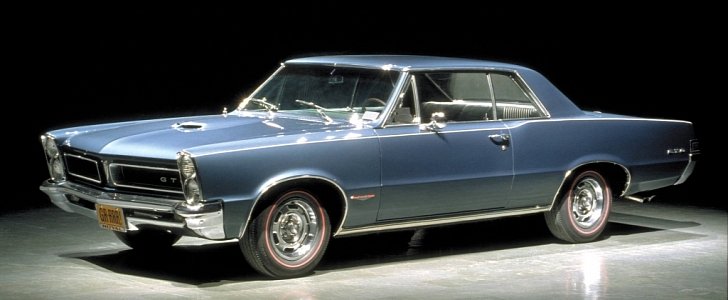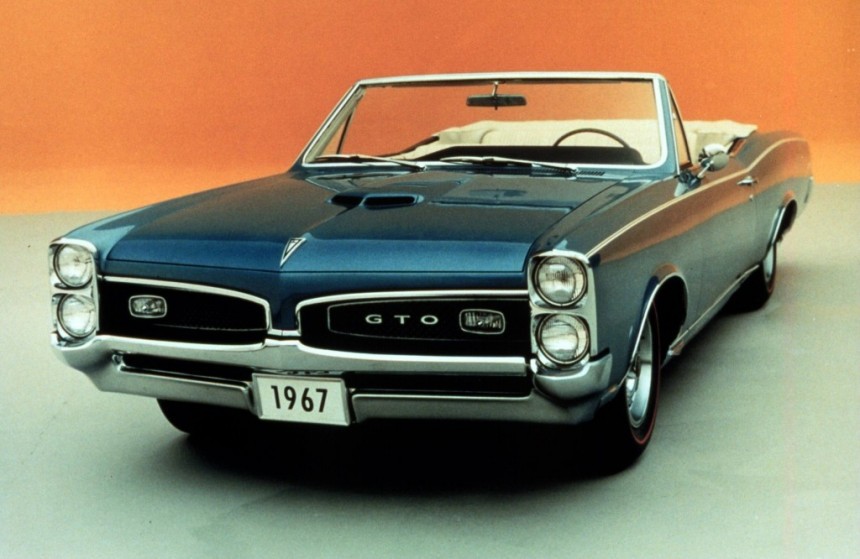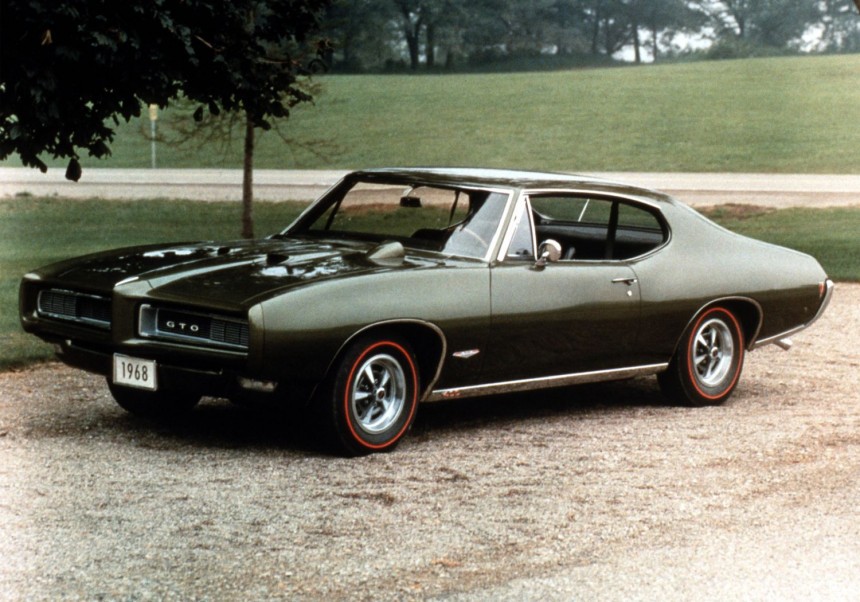Ground-shaking, earth-rumbling, ear-popping, and heart-pumping muscle cars are as American as pearly-white teeth, fast-food establishments, helicopter-filmed car chases in the news and Baywatch. And we mean this in a good way.
Some fifty years ago, what later became known as the Baby Boomer generation was growing up while the American car industry was getting ready to start what was probably the best period for mass-produced performance automobiles in U.S. history.
Starting with what is almost universally agreed to be the very first muscle car, the Pontiac GTO, the 1960s and early 1970s were the pinnacles of development of road rockets in and around the automotive city of Detroit.
From the dozens of tire-shredding production hot rods that hit the American roads in the period, we've put together a small(ish) story about the one that impressed us (and most likely others as well) the most. Enjoy!
After ripping off the GTO (Gran Turismo Omologato) name from Ferrari, they presented a black/white compromise: a car that was powerful, yet affordable. Unlike other performance cars of the era, the Pontiac GTO was the one that brought power for the masses.
The first-ever GTO was actually a package for the Pontiac Tempest, and it managed to establish the muscle car realm by mistake. The three men responsible for the creation of the car were Pontiac engine specialist Russell Gee, chassis engineer Bill Collins and none other than chief engineer John DeLorean, who would go on to create the DMC-12 and suffer a government drug deal entrapment about two and a half decades later. Even though Pontiac's image at the time was relying heavily on performance vehicles, General Motors had instituted a ban on all racing activities from its divisions in 1963.
This made Pontiac head honchos think about alternative means of promoting their sporty image. This alternative means materialized in the special version of the Pontiac Tempest, dubbed Tempest GTO.
The mid-size car thus received a larger 389 ci (6.5 liters) V8, which was until then reserved for the full-size Pontiac Catalina and Bonneville. Later transforming into a stand-alone model thanks to its major success, the GTO went on to become defined as "the original muscle car". Ironically named the "Goat" by fans, the 350 hp version of this wolf in sheep's clothing could go from naught to 60 mph in under 7 seconds without any modifications.
Even though the 1964 was so successful, the 1965 model remained an option for the Tempest, but it was further improved, mostly design-wise. It got the vertically stacked headlights to keep it in line with Pontiac's full-size models, while a tri-power option was offered, giving function and not only looks for the (until then) non-functional hood scoops. Also, the grille lost the horizontal bars and the taillights became chrome ribbed.
Sadly, in the middle of that year, General Motors decided to put a ban on building any engine with more than one carburetor, so the Tri-Power option was dropped. 1967 saw a return to the "old" power levels by upgrading the 389 ci engine to 400 ci.
A year later, in 1968, the GTO saw its first major restyling, starting to be manufactured on a new platform also. "The Goat" was now built on the A-body platform, sporting a 112-inch wheelbase, while the entire car became heavier than the models it replaced.
Styling-wise, it lost most of its chrome, as the front bumper was replaced by a revolutionary rubber one called "Endura", which gave the car a much cleaner look in the front. Hidden headlights became an option that was so sought after that some people even thought it was a standard feature. 1968 was also the last year when the "6.5 Litre" front fender emblem was to be present on a GTO since its 1964 launch.
In 1969, probably the most famous version of GTO in its entire history was launched. The Pontiac GTO "Judge" was actually an option package that consisted of a new 400 ci V8 with a Ram Air intake that was delivering 366 hp. That was only the start. The body was covered with shocking paint colors, there was also a semi-functional rear spoiler and "Judge" decals all over the car. The year when the original Woodstock Music Festival was held coincided with the start of a slow death of the GTO.
In the following year, sales were beginning to slip, and "The Goat" had become more of a heavy and more luxurious tourer than an all-out muscle car. It had received a new front design, with four headlamps engulfed in the now-famous "Endura" bumper and a redesigned rear end.
1974 was to become the last year of production for the original muscle car, now shamelessly based on the compact Pontiac Ventura, only a shadow of its former great self.
In the eyes of hardcore muscle car fans, although this wasn't exactly a true GTO, at least it was the last American-designed one, hence General Motors attempted rejuvenating the famous badge with the Australian Holden Monaro sold as a Pontiac between 2004 and 2006.
Starting with what is almost universally agreed to be the very first muscle car, the Pontiac GTO, the 1960s and early 1970s were the pinnacles of development of road rockets in and around the automotive city of Detroit.
From the dozens of tire-shredding production hot rods that hit the American roads in the period, we've put together a small(ish) story about the one that impressed us (and most likely others as well) the most. Enjoy!
1964 - Power to the people!
The one that started it all. The original muscle car. In a time when the Ferrari 250 GTO, with its Bizzarrini-designed 300 hp V12, was giving wet dreams to the majority of car enthusiasts in the world, a few Pontiac people decided to take everyone by storm.After ripping off the GTO (Gran Turismo Omologato) name from Ferrari, they presented a black/white compromise: a car that was powerful, yet affordable. Unlike other performance cars of the era, the Pontiac GTO was the one that brought power for the masses.
The first-ever GTO was actually a package for the Pontiac Tempest, and it managed to establish the muscle car realm by mistake. The three men responsible for the creation of the car were Pontiac engine specialist Russell Gee, chassis engineer Bill Collins and none other than chief engineer John DeLorean, who would go on to create the DMC-12 and suffer a government drug deal entrapment about two and a half decades later. Even though Pontiac's image at the time was relying heavily on performance vehicles, General Motors had instituted a ban on all racing activities from its divisions in 1963.
The mid-size car thus received a larger 389 ci (6.5 liters) V8, which was until then reserved for the full-size Pontiac Catalina and Bonneville. Later transforming into a stand-alone model thanks to its major success, the GTO went on to become defined as "the original muscle car". Ironically named the "Goat" by fans, the 350 hp version of this wolf in sheep's clothing could go from naught to 60 mph in under 7 seconds without any modifications.
Even though the 1964 was so successful, the 1965 model remained an option for the Tempest, but it was further improved, mostly design-wise. It got the vertically stacked headlights to keep it in line with Pontiac's full-size models, while a tri-power option was offered, giving function and not only looks for the (until then) non-functional hood scoops. Also, the grille lost the horizontal bars and the taillights became chrome ribbed.
1966 – Start of a revolution
For the first time offered as a stand-alone model and not as a package, the 1966 GTO eventually became the highest selling muscle car from that year. It received minor styling changes, but enough to differentiate it even more from the 1964 original.Sadly, in the middle of that year, General Motors decided to put a ban on building any engine with more than one carburetor, so the Tri-Power option was dropped. 1967 saw a return to the "old" power levels by upgrading the 389 ci engine to 400 ci.
A year later, in 1968, the GTO saw its first major restyling, starting to be manufactured on a new platform also. "The Goat" was now built on the A-body platform, sporting a 112-inch wheelbase, while the entire car became heavier than the models it replaced.
In 1969, probably the most famous version of GTO in its entire history was launched. The Pontiac GTO "Judge" was actually an option package that consisted of a new 400 ci V8 with a Ram Air intake that was delivering 366 hp. That was only the start. The body was covered with shocking paint colors, there was also a semi-functional rear spoiler and "Judge" decals all over the car. The year when the original Woodstock Music Festival was held coincided with the start of a slow death of the GTO.
In the following year, sales were beginning to slip, and "The Goat" had become more of a heavy and more luxurious tourer than an all-out muscle car. It had received a new front design, with four headlamps engulfed in the now-famous "Endura" bumper and a redesigned rear end.
1972 - Beginning of the end
Slow sales pushed General Motors officials to cancel the Pontiac GTO as a stand-alone model, the once-mighty muscle car becoming an option package once again, only this time it was for the Pontiac LeMans and the LeMans Sport. In the next year, newly imposed government safety regulations eliminated the "Endura" bumper, adding a very heavy-looking steel one instead, on all Pontiacs.1974 was to become the last year of production for the original muscle car, now shamelessly based on the compact Pontiac Ventura, only a shadow of its former great self.
In the eyes of hardcore muscle car fans, although this wasn't exactly a true GTO, at least it was the last American-designed one, hence General Motors attempted rejuvenating the famous badge with the Australian Holden Monaro sold as a Pontiac between 2004 and 2006.










